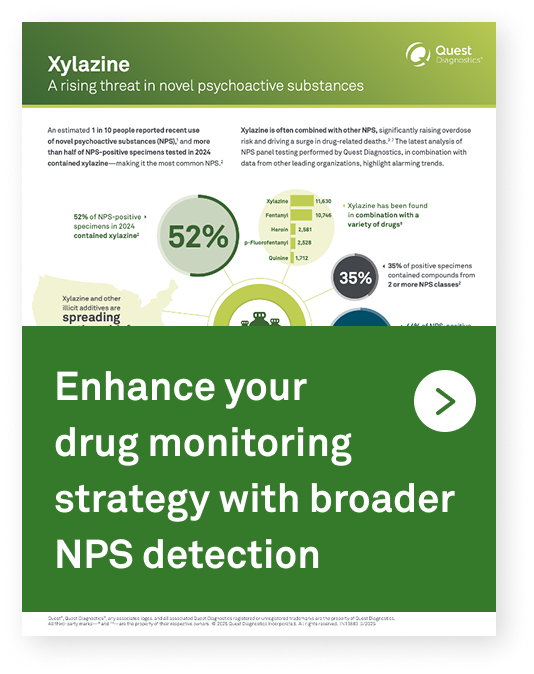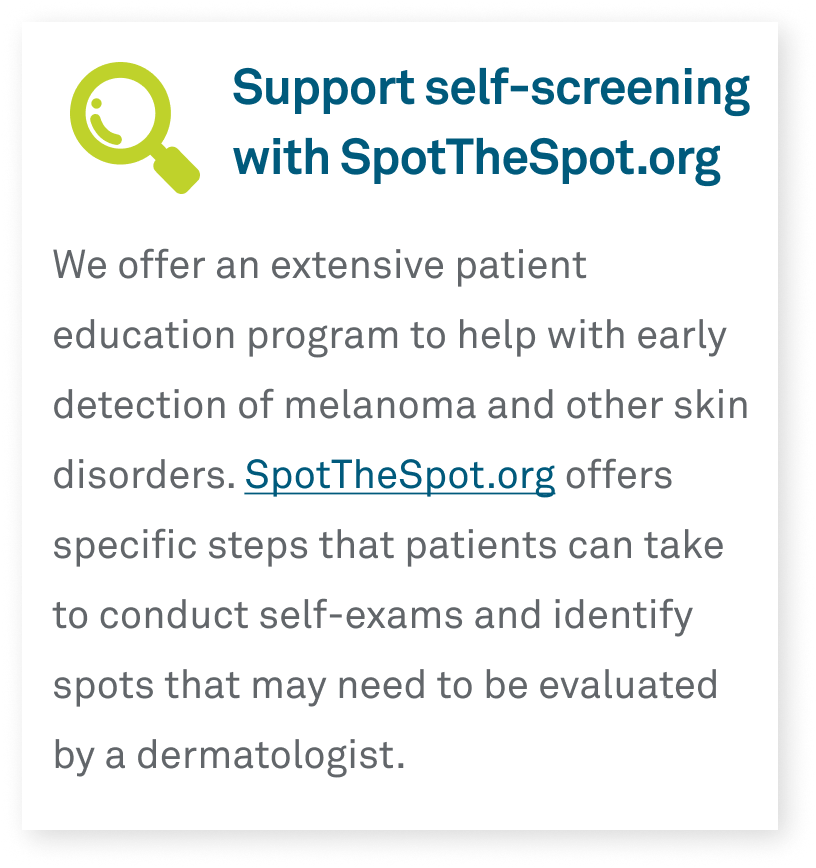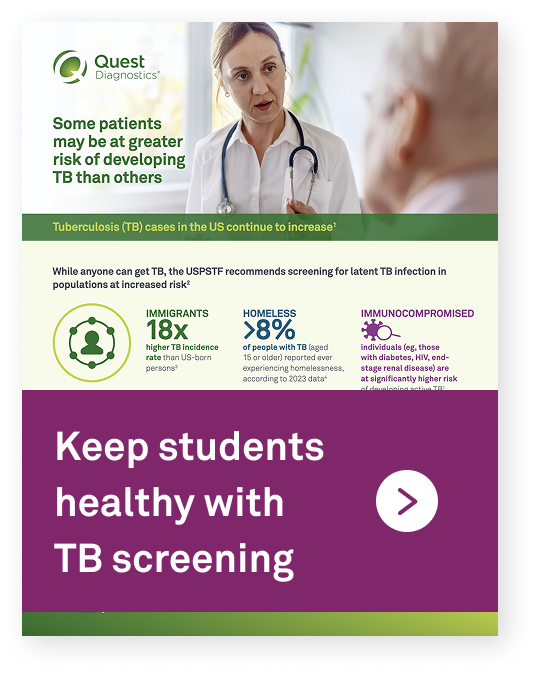July 2025

Discoveries, trends, and discussions in medical diagnostics
Welcome to the July issue of Diagnostics Dialogue, where you can get up to speed on the most important discoveries, trends, and discussions in medical diagnostics. Continue reading to learn more about:

|
Better outcomes |
Better outcomes |
Stay current as new NPS threats emerge
The landscape of drug misuse is evolving rapidly—driven by novel psychoactive substances (NPS) that mimic known drugs while evading detection. These synthetic compounds are increasingly present in counterfeit pills.1,2
Recent findings highlight growing concerns
The Drug Monitoring, NPS panel from Quest can help you:
- Detect compounds across 6 major NPS classes—including designer opioids, benzodiazepines, and synthetic cannabinoids
- Identify combinations of high-risk substances that may not show up in presumptive screens
- Gain insight into evolving trends to better inform treatment, prevention, and oversight
With definitive drug testing, Quest helps you stay ahead—so you can protect patients and respond with confidence
Clarify the source of your patient’s cognitive symptoms
Blood-based biomarkers are transforming how we detect and manage cognitive impairment, enabling timely assessments that may improve outcomes for patients.5
Comprehensive test portfolio for assessing the potential cause of cognitive impairment
Quest offers an expansive portfolio of plasma testing that provides an effective and minimally invasive tool for assessment of cognitive decline.6-8
This includes our panel, AD-Detect™ ABeta 42/40 and p-tau217 Evaluation, which combines Aβ 42/40 and p-tau217 plasma levels to help establish the likelihood of amyloid pathology consistent with Alzheimer's disease, evaluated at 91% sensitivity and 91% specificity—meeting accepted performance standards for blood-based biomarker tests.9,10
The biomarker values are combined into a single analytical interpretation, which has been shown to significantly improve predictive performance and accuracy for detecting amyloid positivity corresponding to the findings of an amyloid PET scan and establishing a diagnosis of Alzheimer's disease.

|
Better experiences |
Better experiences |
Uncover the link between autoimmune disease and cardiometabolic risk
Autoimmune conditions can be complex to diagnose. Antinuclear antibody (ANA) testing alone is not enough to definitively diagnose an autoimmune disease because symptoms can be vague, vary between patients, and often overlap.
Additionally, as the risk of autoimmune disease has risen among patients with history of COVID-19 infection, so has their risk for cardiometabolic disease.11
Insights on demand
Presented by Kenneth French, Sr, Clinical Consultant at Quest Diagnostics, this webinar:
- Explores the ever-evolving role of primary care physicians in diagnosing autoimmune disease
- Builds confidence in results interpretation for comprehensive autoimmune testing with the ANAlyzeR™ panel
- Reviews the necessity of monitoring and managing comorbidity risk between autoimmune disease and cardiometabolic disease using the Metabolic Risk Panel
Help patients take control and prevent skin cancer
Skin cancer is the most common cancer in the US,12 and melanoma is its deadliest form.
As melanoma rates continue to rise at an alarming pace,13 early detection and prevention are more important than ever. Though melanoma accounts for just 1% of all skin cancers,14 it is more likely to grow and spread—making early identification critical.15
Quest and Dermpath Diagnostics can help with diagnosis—from routine to complex cases.
As a leading provider of dermatopathology services in the US, we offer guideline-driven testing solutions backed up by over 75 board-certified dermatopathologists. Learn more at DermpathDiagnostics.com.

|
Removing traditional barriers to testing |

|
Removing traditional barriers to testing |
Removing traditional barriers to testing |
Prepare for back-to-school TB screening
After nearly 30 years of steady decline, tuberculosis (TB) is once again on the rise in the US.16
Back-to-school season is a key opportunity for TB screening
As students prepare to return to classrooms, TB screening remains essential—especially for those who have traveled abroad or who are from high-risk regions.

Blood-based IGRA tests are preferred by leading health organizations17,18
Compared to the traditional Mantoux skin test, interferon-gamma release assays (IGRAs) offer several advantages:
Quest offers a choice of TB blood tests.19
Our TB testing options support streamlined workflows and fast, reliable results—making it easier to meet school health requirements and support broader TB control efforts.
|
|
World Hepatitis Day is July 28 |
|
|
World Hepatitis Day is July 28 |
|
|
World Hepatitis Day is July 28 |
World Hepatitis Day is July 28 |
More than 300 million people live with hepatitis worldwide, and over 2 million new cases are diagnosed each year.20 Yet the vast majority remain undiagnosed and untreated.21 |
|
Routine screening is critical to improve outcomes and reduce transmission
Early detection is essential to help prevent serious illness and curb the spread of hepatitis. The CDC now recommends routine screening for all adults.
|
|
All adults should be screened for HBV and HCV at least once in their lifetime22,23
|
Quest supports hepatitis screening in alignment with CDC guidelines22,23
We offer a full range of hepatitis testing solutions that follow CDC recommendations:
- HBV triple panel testing to answer 3 key questions about a patient’s HBV status
- HCV reflex testing that performs both steps from a single sample, minimizing delays and follow-up burden
Achieving the Quadruple Aim in your practice
Our purpose is to support you and your patients with leading services, patient experiences, and innovative testing that can help you provide clarity to the constant changes and challenges we’re seeing in healthcare today.
About Diagnostics Dialogue
In our conversations with providers across the country, we hear that you are facing many different constraints that make delivering care challenging. We’re here to help you navigate the uncertainty and deliver better health. With a broad test menu spanning 3,500+ tests and consultations from our medical staff of over 850 MDs and PhDs, we empower healthcare providers to create healthier communities, one patient at a time.
References
The CPT® codes provided are based on American Medical Association guidelines and are for informational purposes only. CPT coding is the sole responsibility of the billing party. Please direct any questions regarding coding to the payer being billed.
Image content features models and is intended for illustrative purposes only.









